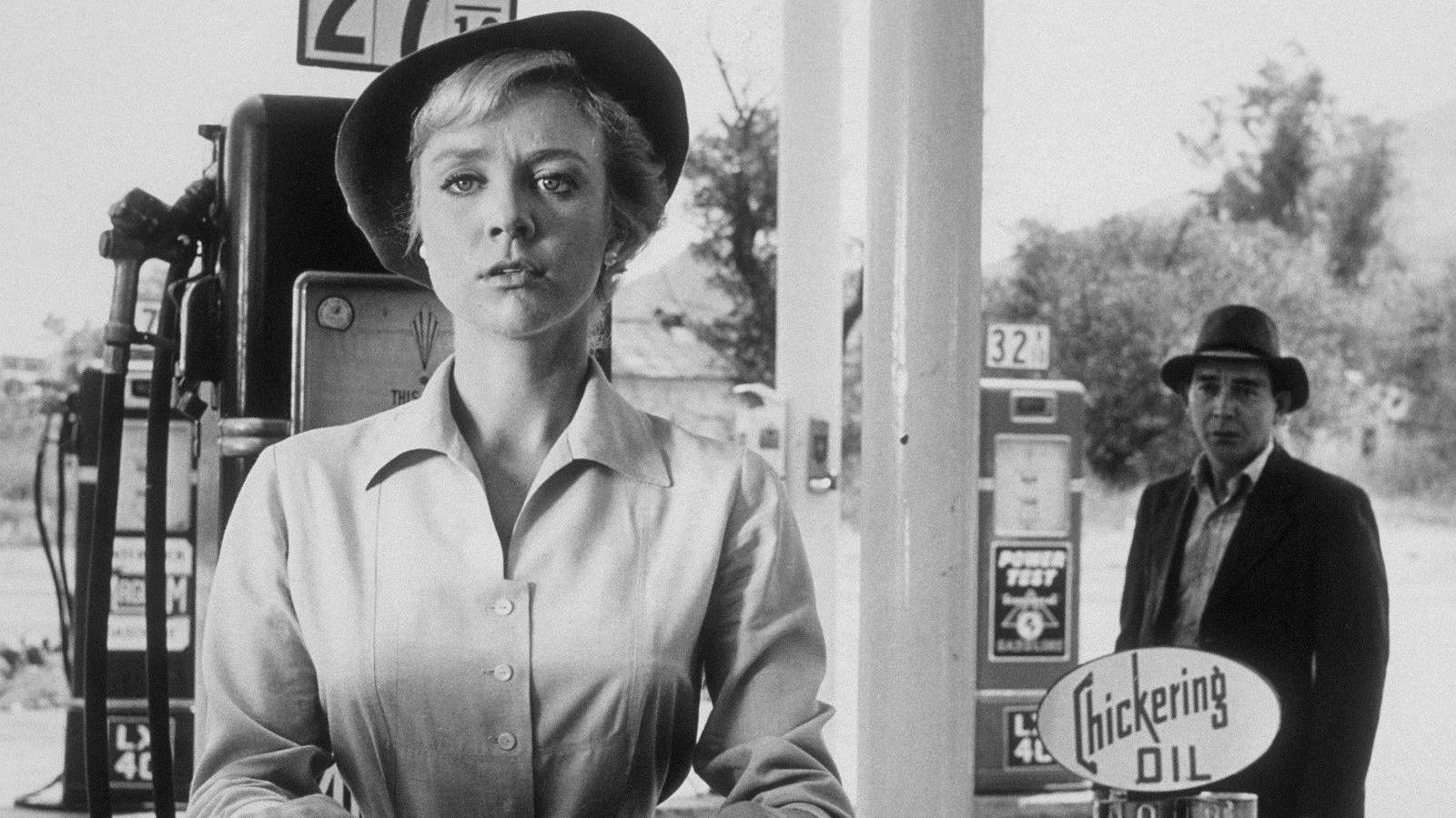
The Twilight Zone Made An Unauthorized Change To The Hitch-Hiker Its Author Hated – /Film
Although plenty of spooky movies and shows would do a twist where the main character turns out to be dead the whole time, none of them handled it quite as gracefully as “The Twilight Zone” did back in 1960. The season 1 episode follows Nan (Inger Stevens), a young woman driving alone across the country who finds herself being stalked by a strange, unsettling stranger. The guy teleports from place to place, defying all known laws of physics, and it doesn’t seem like his intentions are good.
It’s only at the very end, when Nan tries to call her mother, that we figure out what’s going on: Nan actually died right before the start of the episode from the minor car accident we saw her brushing off. She was told in that first scene she was lucky she hadn’t died in the incident; at the end when Nan hears about her mother suffering a “nervous breakdown” from “the death of her daughter,” she realizes she wasn’t so lucky after all.
Fortunately, this version of the Grim Reaper is a nice guy. He’s basically a less efficient version of the Death we would meet in Neil Gaiman’s “Sandman” series 30 years later. In those comics, people would have a similar out-of-body experience after a fatal accident, where they’d initially remark something like, “Whoa, that was close!” before Death would gently break the news to them of their demise. This Death does the same thing, but he’s taking his sweet time about it.
Although a lot of the credit for this episode goes to the show’s creator, Rod Serling, “The Hitch-Hiker” is one of the many installments to be based on pre-existing material. The story originated from Lucille Fletcher’s radio play of the same name, but Fletcher wasn’t thrilled about some of the show’s changes to her work.
From Ron to Nan
 CBS
CBS
The main change was the gender of the main character: in the original play, Nan Adams was instead a man named Ronald Adams, and he went through the same basic sequence of events. “I was not asked to adapt the play to television, nor was I asked about the change of gender in the main character,” Lucille Fletcher said, according to the 1992 “Twilight Zone” companion book. “If I had been, I would never have approved of it, for good though Inger Stevens’ performance was, I don’t think a female in the part added anything to my play. In fact, I think that the dramatic effect was minimized.”
Although Serling probably should’ve given Fletcher a heads-up about all this beforehand, it is easy to see the logic behind changing the main character’s gender. A story about a woman on her own throughout the empty countryside is a lot creepier than it’d be with a man. Even today, traveling alone as a woman is a lot riskier than traveling alone as a man, to the point where nearly every travel website has an advice article specifically written to give women traveling safety tips. A man being stalked by another man is creepy, sure, but a woman being stalked by a man is both creepy and common. It helps to add an extra layer of foreboding to the hitchhiker’s stalking, especially since the actor (Leonard Strong) doesn’t portray him as a particularly menacing figure. The cultural context of a strange man pursuing a lost, innocent woman does a lot of heavy lifting here.
Cutting the accident
 CBS
CBS
The other change, which Fletcher didn’t seem to have an issue with, was the cutting of the radio play’s opening scene, in which Ronald says goodbye to his worried mother. It adds more depth to the reveal at the end; whereas in the show the mother’s nervous breakdown is merely a means to reveal the episode’s big twist. In the play, it’s a lot sadder because the mother’s an established character with dialogue pre-reveal. We’ve heard exactly how scared she was for her son on his long road trip, and now we know her worst fear’s been revealed.
Rod Serling also cut the scene when the main character dies. In the play, Ronald dies in a car crash on the Brooklyn Bridge at the very beginning of his road trip. In the show, Nan is already out in the middle of nowhere when the accident happens, but we don’t see the moment play out. It’s easier to see Serling’s logic behind this: by starting the story far out of the city, the episode establishes a sense of isolation and vulnerability from the very first moment.
It’s hard to say which version of the story is better, especially when both were such a success. The “Twilight Zone” episode is considered by many as one of the best in the whole series, whereas Fletcher’s play was also a huge hit throughout the 1940s. Not only was it performed on “The Orson Welles Show” in November 1941, but Welles went on to perform it on “Suspense” in September of ’42, on “The Philip Morris Playhouse” in October ’42, and “The Mercury Summer Theatre of the Air” in ’46. It seems that some stories are so captivating that it doesn’t matter what medium they’re told from, they’ll stick with audiences no matter what.


















































